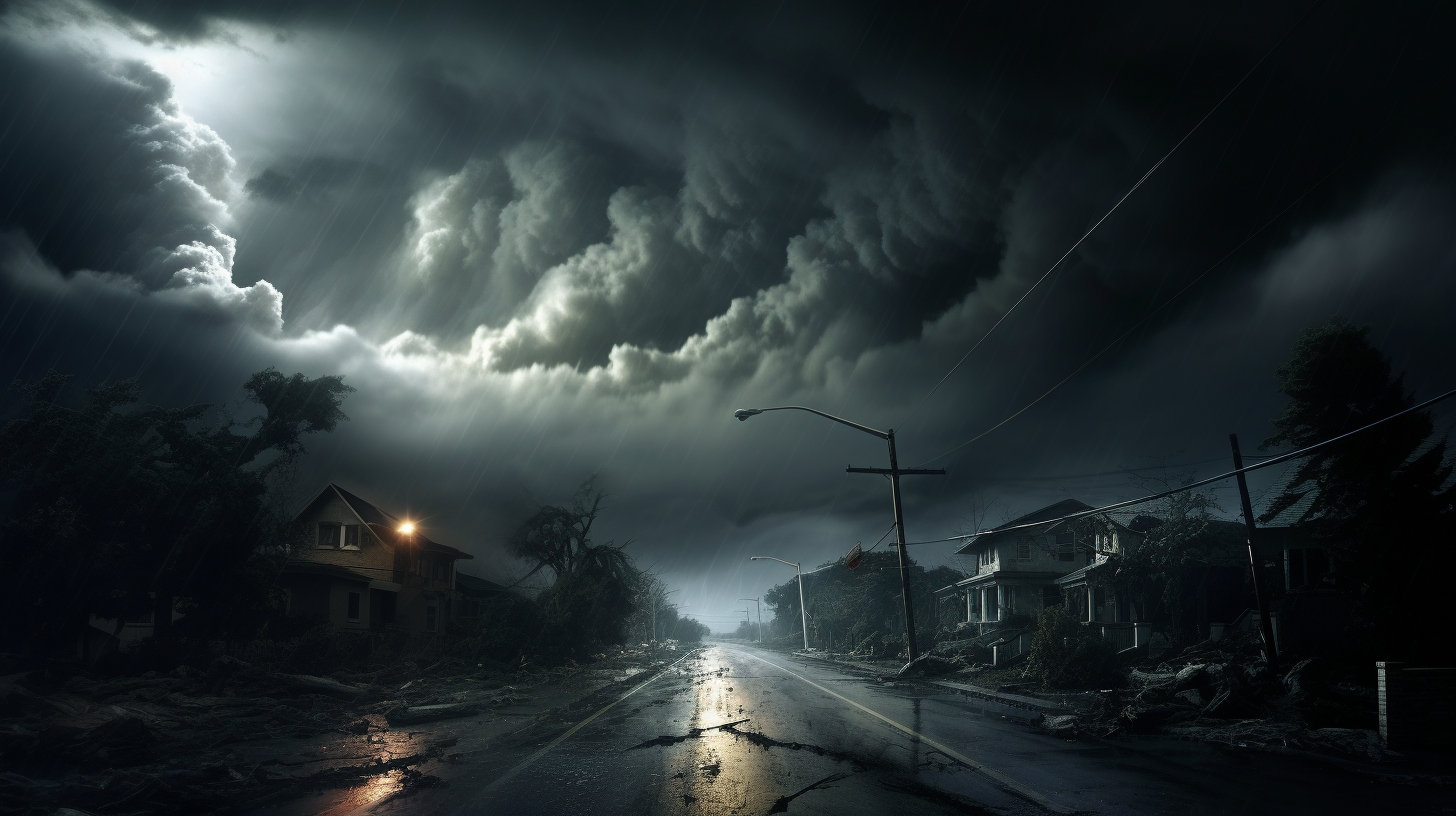In the relentless march of our new era of extreme weather, the phenomenon of ‘Hyperstorms’ has emerged like a behemoth from the tempestuous sea. Once the stuff of science fiction, these behemoth storms have become a haunting fixture in our planetary narrative.
Hypothetical no more, these titanic systems boast wind speeds that can surpass the sound barrier, uprooting the very foundations of our civilizations. They have recalibrated the scale of destruction, dwarfing historical benchmarks with ease. As ecosystems buckle and human societies tremble, we wade through the wreckage in the wake of Hyperstorms’ merciless onslaught.
The Phillipine archipelago, once a lush beacon of biodiversity, has become a macabre testament to climate indifference. In the past year alone, Hyperstorm Athena razed the islands, rendering millions homeless and the once teeming reefs silent – their colorful denizens succumbed to the aquatic upheavals.
The menace is global – the North American seaboard is now an annual contestant in a perverse lottery of destruction. The coastal cities, with their sky-piercing silhouettes, stand vulnerable, and as these towering tempests approach, the mood is grim: fate seemingly sealed by environmental abandon.
But what has birthed these monsters of the sky? Scientists link Hyperstorms to a hellish concoction of rising sea temperatures and erratic jet streams – a climate system gone rogue. As Dr. Angela Hart, a lead meteorologist at the International Climate Consortium, puts it, ‘Hyperstorms are nature’s fury, unleashed by a blend of human negligence and atmospheric opportunism.’
Amid these darkened skies, there lies the cruel irony of the green revolution that came too late. Our once-vaulted technology, designed to harness the wind and sun, now lies in tatters under the Hyperstorm’s relentless gale. The energy grids, promised to be eternal, flicker and die, while the populace is left to question; where was this foresight when the earth was still ours to save?
Perilous as the storms are, they also present a grotesque silver lining. The economic landscape is shifting; disaster capitalism thrives. Companies specializing in fortified shelters and emergency services are experiencing what can only be described as a post-apocalyptic boom. ‘We’re constructing empires on the broken backs of nature’s temper,’ comments a CEO who wishes to remain unnamed.
But even steel-reinforced bunkers and elite evacuations cannot eclipse the human cost. The social divide deepens, as the affluent shield themselves behind barricades of privilege while the less fortunate face the raw fury of the wind and rain. Communities, fragmented by storm lines, weave tales of perseverance – their once bright-eyed optimism replaced with a harrowing resolve to survive.
In the face of such despair, artistic expression has swelled in the murkiest of waters. Ballads of the Hyperstorms resonate through the digital remnants of our networks. Bleak, yet gallows-humorous memes circulate, reminding us that laughter, albeit dark, remains a cornerstone of our humanity.
The whispers of the wind carry a cold lesson – Hyperstorms, through their violence, echo the failings of generations past and the harrowing truth that these mirrors to our hubris emerge not from an angry ether, but from the very ether we muddied with our indifference.
In conclusion, Hyperstorms stand as brutal custodians of a new age – a climate terror, born not of unknown forces, but of our collective transgressions. As we stare into their howling cores, perhaps it is not the climate that should be feared, but the reflection of our society revealed within their swirling depths.
